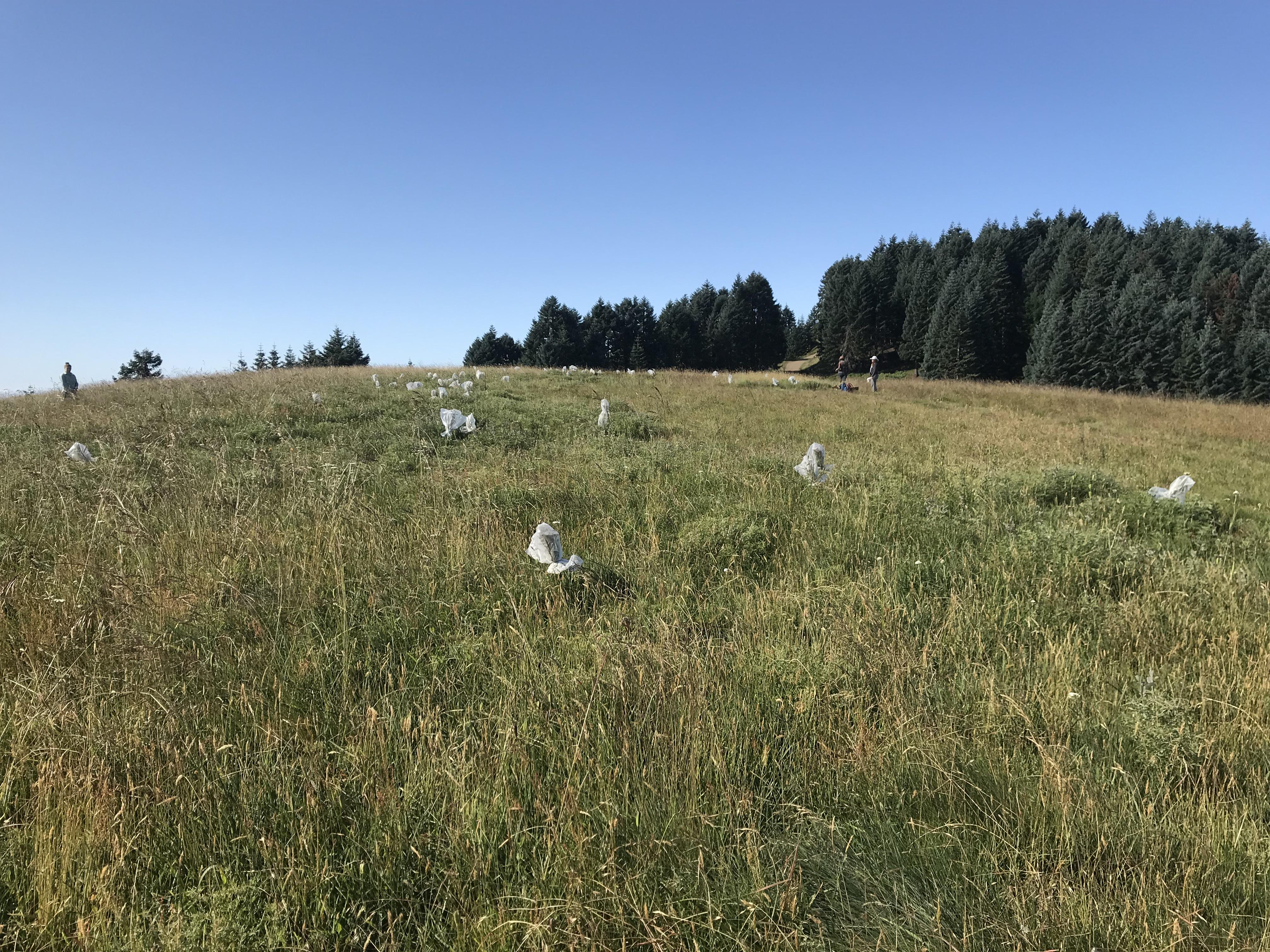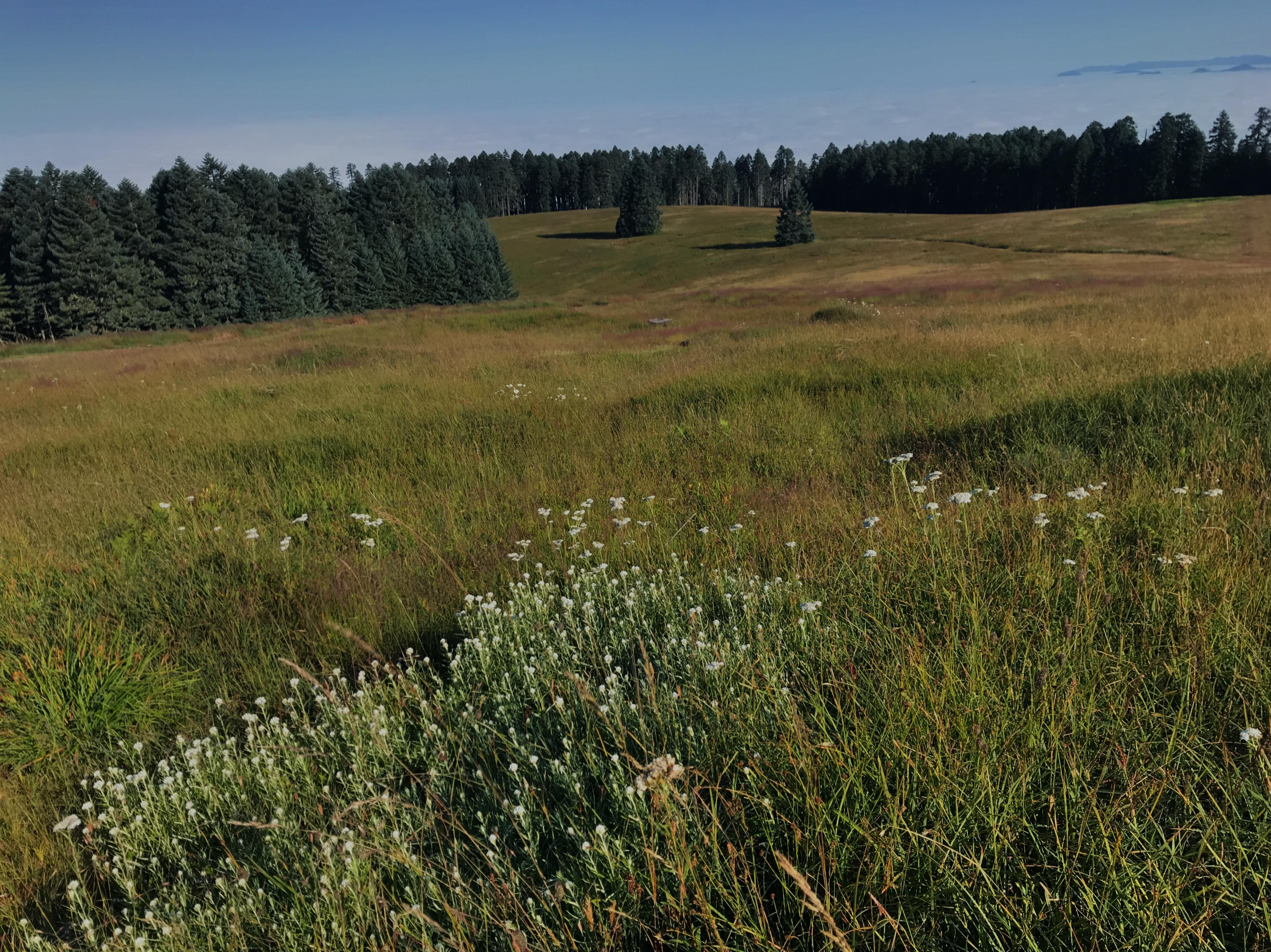
Marys Peak: Upcoming Care for a Beloved Meadow
April 2022
Standing atop Marys Peak, it’s easy to focus on the beautiful landscapes in the distance. The tallest peak in the Coast Range gives a unique view of the surrounding range, Oregon's Willamette Valley, a number of Cascade Range volcanoes and, when conditions are right, even a little patch of ocean. If you’ve never made the trip to the top, you should. Seriously, clear your schedule, it is worth it!
Over 900 acres of unique meadows and forest make the Marys Peak Scenic Botanical Special Interest Area (SBSIA). This regionally rare habitat is under protection and ongoing enhancement. For more background about Marys Peak SBSIA, see this 2012 article by Hays, Frenkel and McEvoy. In 2022, IAE and the Siuslaw National Forest will begin a five-year restoration plan at Marys Peak. Restoration actions include conifer sapling removal, invasive plant management, trail de-compaction and revegetation of disturbed areas.
Noble firs (Abies procera) are a unique characteristic of Marys Peak because only a few locations in the Coast Range are elevated enough to accommodate noble fir. The young coniferous seedlings pop up on the meadow edges and slowly encroach on the meadow habitat, converting it to forest. Active efforts for many years have reduced saplings in the meadow and, chances are, many of you IAE volunteers have helped in this work. We will be hosting multiple volunteer events in the next few years asking for your help in pulling young noble fir saplings from the meadow interior and edges to reduce the encroachment of these conifers.
Invasive plant management will be a major focus of the next five years at Marys Peak. There are two primary species in need of treatments in order to maintain health of the meadow: Oxeye daisy (Leucanthemum vulgare) and creeping velvet grass (Holcus mollis). Oxeye daisy has been spreading around the trails and will be hand pulled and treated with herbicide to hopefully remove this plant before it spreads throughout the meadow complex.
Creeping velvet grass has taken over about an acre of meadow near the upper parking lot. This invasive grass grows dense, spreads rhizomatously and forms thick layers of thatch making it near impossible for other species to grow. In some areas the thatch is ten inches thick. We will use a mixed approach to remove the invasive grass including mowing, manual thatch removal, burning and grass specific herbicide applications.
We will be working to de-compact a “trail” that formed from visitors repeatedly hiking to a knoll off the main trail. We will be de-compacting the trail and reseeding in an effort to revegetate the area and essentially remove the visible route. We would love your support in this effort and would encourage you to stay off this section of meadow and help us restore the area. You may see IAE staff in the coming months collecting seed from native plants to use for revegetation of this section in the fall, or you may see our seed collection bags (see image) scattered around the landscape. Please leave the bags in place and say hello if you see us working.
These efforts couldn’t happen without a large network of collaborators. We want to thank the Siuslaw National Forest, Alliance for Recreation and Natural Areas (AFRANA), Marys Peak Alliance, BLM, and the City of Corvallis. Previous work at West Point meadow, part of the Marys Peak meadow system was made possible by collaboration with Cascade Pacific, Trout Mountain, and AFRANA.
There will be lots of volunteer opportunities at Marys Peak in the next couple years. If you or your organization want to help with restoration, please email Rolando at [email protected] to learn about upcoming opportunities at Marys Peak.
Restoration
Research
Education
Get Involved
Contact
Main Office:
4950 SW Hout Street
Corvallis, OR 97333-9598
541-753-3099
[email protected]
Southwest Office:
1202 Parkway Dr. Suite B
Santa Fe, NM 87507
(505) 490-4910
[email protected]
© 2024 Institute for Applied Ecology | Privacy Policy


